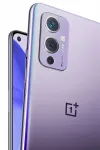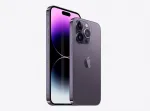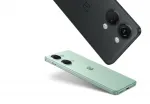The Nokia 100, also known as model_name, offers a blend of affordability, durability, and performance, making it a popular choice among budget-conscious consumers. This device is the perfect choice for those who want a simple yet reliable mobile phone without breaking the bank.
One of the most prominent specifications of the Nokia 100 is its body, which measures 110 x 45.5 x 14.9 mm (4.33 x 1.79 x 0.59 in) and weighs 69.6 g (2.43 oz). This compact and lightweight design makes it extremely easy to handle and carry around, making it ideal for everyday use. Additionally, the device features a flashlight, adding to its functionality.
When it comes to connectivity, the Nokia 100 offers a Mini-SIM card slot and supports GSM 850 / 900 / 1800 / 1900 networks, which allows users to make calls and send text messages to their contacts. However, it does not support EDGE or GPRS data connections, which means it is not suitable for internet browsing. Nevertheless, it offers an FM radio for entertainment purposes.
The display of the Nokia 100 is a 1.8-inch TFT (Thin Film Transistor) panel, with a resolution of 128 x 160 pixels and 65K colors. Although the screen may not be as advanced as those of modern smartphones, it provides clear and vibrant visuals, making it easy to navigate through menus and read text messages. Additionally, with a pixel density of 114 ppi, users can expect decent image quality.
The battery life of any mobile device is essential, and the Nokia 100 does not disappoint in this aspect. It features a removable Li-Ion 850 mAh battery (BL-5CB), which offers a standby time of up to 840 hours and a talk time of up to 7 hours and 20 minutes. This means users do not have to worry about frequently charging their device, even with extended use.
In terms of storage, the Nokia 100 offers 500 entries for the phonebook and the option to store call records. However, it does not have a card slot, which means users cannot expand the storage capacity using a microSD card. Nonetheless, it is still sufficient for storing essential contacts and call logs.
Among the additional features of the Nokia 100 is its built-in loudspeaker and 3.5 mm audio jack, which allows users to listen to music and other audio content without the need for headphones. The device also comes with an organizer, making it easy for users to manage their tasks and schedules on the go.
The SAR (Specific Absorption Rate) of a mobile device refers to the amount of radio frequency energy absorbed by the body when a person is using a phone. The SAR for the Nokia 100 in the head is 1.18 W/kg and 0.66 W/kg for the body, while the European Union (EU) standard is 0.81 W/kg for the head. This means the device is safe for use, and the emission of radiation does not pose any significant health risks.
In conclusion, the Nokia 100 is a reliable and straightforward device that offers essential features for communication and entertainment purposes. Its simple design, long-lasting battery, and affordability make it an excellent choice for those who value functionality above all else. Despite its discontinued status, this device still serves as an ideal option for those in need of a basic and durable mobile phone.









